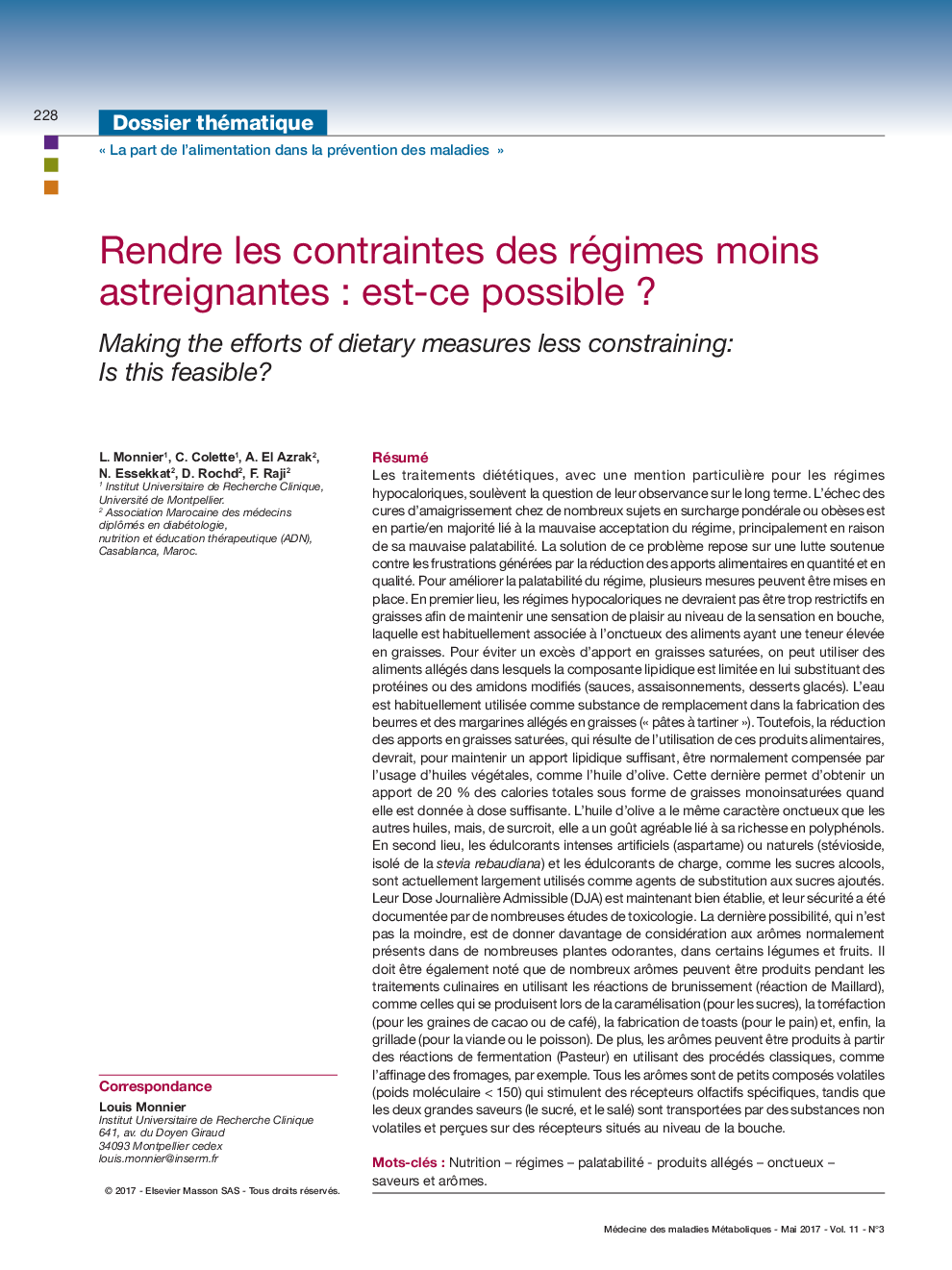| Article ID | Journal | Published Year | Pages | File Type |
|---|---|---|---|---|
| 5656681 | Médecine des Maladies Métaboliques | 2017 | 9 Pages |
Abstract
Dietary therapies with a special mention for energy-restricted diets raise the question as to whether their compliance can be achieved on the long term. Failures of weight losses in many overweight or obese persons are partially/mainly due to a poor compliance to diet, which is mostly consecutive to its poor palatability. Addressing the latter issue requires a sustained fighting against the frustration engendered by the deficient quantity and quality of food intakes. For achieving a better palatability of the diet, several measures can be implemented. Firstly, fat restriction in diets should be limited in order to maintain a pleasant mouthfeeling, which is usually associated with the creaminess of high fat-containing foods. To avoid excess intake from fats, especially from saturated fats, patients can utilize fat-mimetics consisting of protein-or carbohydrate-based substitutes (dressings, frozen desserts). Water is usually used as fat replacer in the manufacturing of butters and margarines with low fat content. However the reduction in fat intake resulting from the utilization of such products should normally be compensated by the use of vegetable fats such as the olive oil. The latter permits to restore the mouthfeeling and to provide 20% of the total calorie intake as monounsaturated fats when supplied at a sufficient level. The olive oil has the same creaminess as the other oils, but has in addition the advantage to provide a pleasant taste due to its high content in polyphenols. Secondly, artificial (aspartame) or natural (stevioside isolated from stevia rebaudiana) intensive sweeteners and such non-intensive sweeteners, as sugar-alcohols are broadly used as substitutes for added sugars. Their Acceptable Daily Intakes (ADI) are now well defined and all have undergone extensive toxicological testing to ensure their safety. Finally, the last but not the least alternative, is to give more consideration to the few thousands of flavours (aromas) that are naturally present in herbal plants and in some vegetables and fruits. It should be also noted that many flavours can be generated during cooking procedures by using the browning reactions (Maillard reaction) such as the thermal processes of caramelisation (for sugars), roasting (for dried seeds of cocoa or coffee), toasting (for bread) and finally, grilling (for meat or fish). In addition, flavours can be produced by the fermentation reactions (Pasteur) using classical processes such as the ripening of cheese for instance. All aromas are small volatile compounds (molecular weight <150) that stimulate cognate nasal receptors whereas the two main tastes (sweetness, and salty) are transported by non-volatile substances for which the sensory perception is limited to the mouth.
Related Topics
Health Sciences
Medicine and Dentistry
Endocrinology, Diabetes and Metabolism
Authors
L. Monnier, C. Colette, A. El Azrak, N. Essekkat, D. Rochd, F. Raji,
